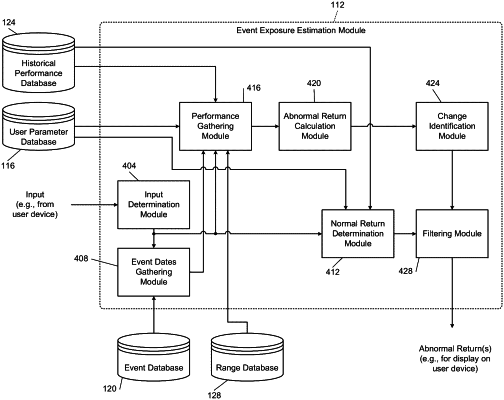| CPC G06F 16/219 (2019.01) [G06F 16/2322 (2019.01); G06F 16/2358 (2019.01); G06Q 40/06 (2013.01)] | 20 Claims |

|
1. A system comprising:
at least one processor and
a memory coupled to the at least one processor,
wherein the memory stores,
a historical performance database including values associated with dates and corresponding to security identifiers;
an event database including a set of event types and, for each event type of the set of event types, a set of event dates, wherein the event types include market events; and
instructions that when executed by the at least one processor, in response to receiving user input, cause the system to perform
identifying, from the user input, a first event type and a first security identifier;
obtaining, based on the first event type, a first set of event dates from the event database;
for each event date of the first set of event dates,
obtaining, from the historical performance database, an event value on the event date of the first security identifier;
obtaining a related date to the event date, the related date being within a date range of the event date;
obtaining, from the historical performance database, a value on the related date of the first security identifier;
determining a difference value, the difference value being a difference between the event value on the event date of the first security identifier and the value on the related date of the first security identifier; and
storing the difference value in a set of difference values;
calculating an average difference of the set of difference values; and
displaying, on a user device, the average difference and an event indicator corresponding to the first event type.
|